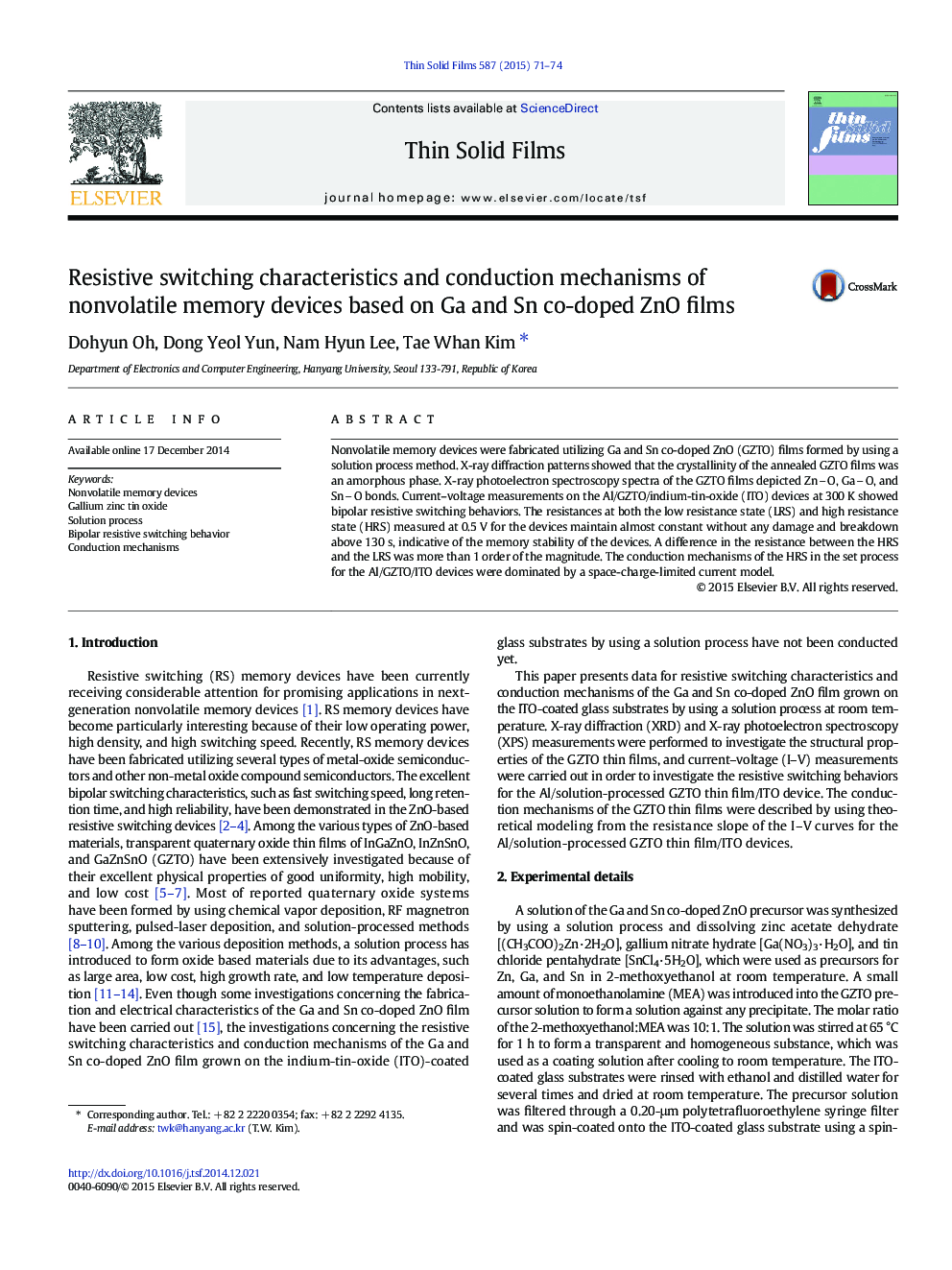| Article ID | Journal | Published Year | Pages | File Type |
|---|---|---|---|---|
| 1664714 | Thin Solid Films | 2015 | 4 Pages |
•Nonvolatile memory devices were fabricated utilizing Ga and Sn co-doped ZnO (GZTO) films.•X-ray diffraction patterns showed that the annealed GZTO films were an amorphous phase.•Current–voltage measurements on the devices showed bipolar resistive switching behaviors.•One order magnitude difference in resistance between low and high resistance states (HRS)•Space charge limited conduction is the dominant conduction mechanisms of the HRS.
Nonvolatile memory devices were fabricated utilizing Ga and Sn co-doped ZnO (GZTO) films formed by using a solution process method. X-ray diffraction patterns showed that the crystallinity of the annealed GZTO films was an amorphous phase. X-ray photoelectron spectroscopy spectra of the GZTO films depicted ZnO, GaO, and SnO bonds. Current–voltage measurements on the Al/GZTO/indium-tin-oxide (ITO) devices at 300 K showed bipolar resistive switching behaviors. The resistances at both the low resistance state (LRS) and high resistance state (HRS) measured at 0.5 V for the devices maintain almost constant without any damage and breakdown above 130 s, indicative of the memory stability of the devices. A difference in the resistance between the HRS and the LRS was more than 1 order of the magnitude. The conduction mechanisms of the HRS in the set process for the Al/GZTO/ITO devices were dominated by a space-charge-limited current model.
